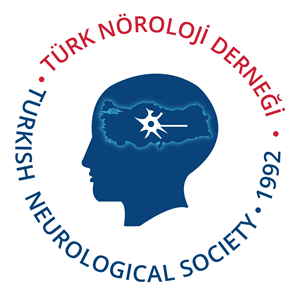The Effect of Homocysteine Levels on Thrombolytic Treatment in Acute Ischemic Stroke
Ezgi Yılmaz1 , Elıf Sarıönder Gencer2
, Elıf Sarıönder Gencer2 , Ethem Murat Arsava1
, Ethem Murat Arsava1 , Mehmet Akif Topcuoğlu1
, Mehmet Akif Topcuoğlu1
1Hacettepe University Faculty of Medicine, Department of Neurology, Ankara, Turkey
2University of Health Sciences Turkey, Antalya Training and Research Hospital, Clinic of Neurology, Antalya, Turkey
Keywords: Homocysteine, tissue plasminogen activator, acute ischemic stroke
Abstract
Objective: Hyperhomocysteinemia is an independent risk factor for cardiovascular diseases. It has paradoxically both antifibrinolytic and pro-hemorrhagic effects. In the study, we investigated the effect of homocysteine (Hcy) levels on thrombolytic therapy in patients with acute ischemic stroke.
Materials and Methods: Patients who received intravenous (iv) tissue plasminogen activator (tPA) between 2005 and 2021 and had Hcy levels measured within the first 3 days were reviewed in terms of tPA efficacy, prognosis and intracerebral hemorrhage. The efficacy of tPA treatment was categorized as effective response (decrease of at least 4 points or a decrease in score to zero) and dramatic response (decrease of at least 8 points or a decrease in score to either zero or one) according to NIHSS score at 24 hours. Scores of 0 and 1 were classified as “excellent outcome”, and scores of 0, 1, and 2 were classified as “good outcome” on the modified Rankin scale evaluated at 3 months. Hemorrhagic transformation was evaluated according to Fiorelli’s classification.
Results: Effective response was observed in 46.7% of the 182 patients (mean age 71±14 years; 99 women) included in the study, and dramatic response in 31.3%. Excellent outcome was reported in 33% of the patients, and good outcome in 53.3%. Cerebral hemorrhage of any severity was detected in 15.9% of the patients, and parenchymal hematoma type 2 in 5.5%. In the analyses made for assessing iv tPA response and cerebral hemorrhage status, no difference was found in terms of Hcy level and between the subgroups formed with different cut-off values of Hcy level.
Conclusion: In our study, hyperhomocysteinemia, which is known to have negative effects on fibrinolysis and vascular integrity, did not show a significant effect on iv tPA efficacy, prognosis and complications. Prospective and large-sample sized studies are needed to better demonstrate these effects.
Ethical approvals were obtained from the Hacettepe University Non-Invasive Clinical Research Ethics Committee for the stroke database and the project (decision no: 2022/07-48, date: 19.04.2022).
Retrospective study.
Externally and internally peer-reviewed.
Surgical and Medical Practices: E.Y., E.S.G., E.M.A., M.A.T., Concept: E.Y., E.S.G., E.M.A., M.A.T., Design: E.Y., E.S.G., E.M.A., M.A.T., Data Collection or Processing: E.Y., E.S.G., E.M.A., M.A.T., Analysis or Interpretation: E.Y., E.S.G., E.M.A., M.A.T., Literature Search: E.Y., E.S.G., E.M.A., M.A.T., Writing: E.Y., E.S.G., E.M.A., M.A.T.
No conflict of interest was declared by the authors.
The authors declared that this study received no financial support.


